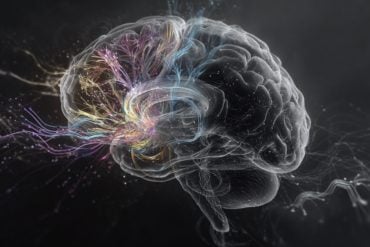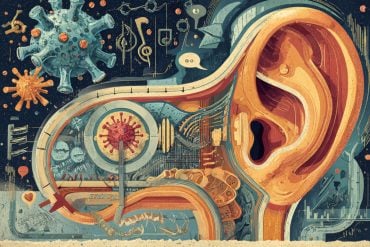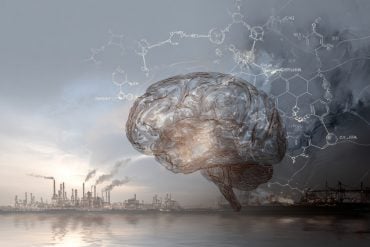Summary: Using fMRI to examine the brains of children while resting, researchers discover anhedonia is associated with hyperconnectivity between the cingulo-opercular network and ventral striatum.
Source: NIH/NIMH
Researchers have identified changes in brain connectivity and brain activity during rest and reward anticipation in children with anhedonia, a condition where people lose interest and pleasure in activities they used to enjoy. The study, by scientists at the National Institute of Mental Health (NIMH), part of the National Institutes of Health, sheds light on brain function associated with anhedonia and helps differentiate anhedonia from other related aspects of psychopathology. The findings appear in the journal JAMA Psychiatry.
Anhedonia is a risk factor for, and a symptom of, certain mental disorders and is predictive of illness severity, resistance to treatment, and suicide risk. While researchers have sought to understand the brain mechanisms that contribute to anhedonia, investigations on this condition have more commonly focused on adults rather than children. Importantly, previous studies often did not separate anhedonia from other related psychopathologies, such as low mood, anxiety, or attention-deficit/hyperactivity disorder.
“Understanding the neural mechanisms of anhedonia that are distinguishable from other psychiatric concerns is important for clinicians to develop on-target treatments,” said lead study author Narun Pornpattananangkul, Ph.D., a postdoctoral fellow in the Emotion and Development Branch, part of NIMH’s Division of Intramural Research Programs. “Yet, disentangling shared characteristics from unique neural mechanisms of anhedonia is challenging because it often co-occurs with other psychiatric conditions.”
To learn more about the neurological underpinnings of anhedonia in children, researchers from the NIMH Division of Intramural Research Programs examined fMRI data collected from more than 2,800 children (9-10 years old) as part of the Adolescent Brain Cognitive Development (ABCD) Study. Some of the children included in the sample were identified as having anhedonia, low mood, anxiety, or attention-deficit/hyperactivity disorder (ADHD). fMRI data were collected while the children were at rest and while they completed tasks assessing reward anticipation and working memory.
Analysis of brain connectivity at rest revealed significant differences in children with anhedonia compared to children without anhedonia. Many of these differences were related to the connectivity between the arousal-related cingulo-opercular network and the reward-related ventral striatum area. These findings suggest that children with anhedonia have altered integration of reward and arousal compared to children without anhedonia.

When the researchers examined brain activity during the tasks, they found that children with anhedonia showed hypoactivation of brain regions involved in integrating reward and arousal during the reward anticipation task — but not the working memory task. This hypoactivation was not seen in children with low mood, anxiety, or ADHD. In fact, children with ADHD showed the opposite pattern: abnormalities in brain activation during the working memory task — but the not the reward anticipation task.
The study suggests that children with anhedonia have differences in the way their brain integrates reward and arousal and in the way their brain activates when anticipating rewards.
“We found anhedonia-specific alterations, such that youth with anhedonia, but not youth with low mood, anxiety, or ADHD, showed differences in the way they integrated reward and arousal and also showed diminished activity in reward-anticipation contexts,” said Dr. Pornpattananangkul. “This finding may start to provide the specific neural targets for treating anhedonia in youth.”
Funding: The study was supported by the NIH/National Institute of Mental Health.
Source:
NIH/NIMH
Media Contacts:
Claire Cole – NIH/NIMH
Image Source:
The image is in the public domain.
Original Research:
Pornpattananangkul N, Leibenluft E, Pine DS, Stringaris A. “Association of Brain Functions in Children With Anhedonia Mapped Onto Brain Imaging Measures”. JAMA Psychiatry. Published online March 13, 2019. doi:10.1001/jamapsychiatry.2019.0020
Abstract
Association of Brain Functions in Children With Anhedonia Mapped Onto Brain Imaging Measures
Importance
Anhedonia can present in children and predict detrimental clinical outcomes.
Objective
To map anhedonia in children onto changes in intrinsic large-scale connectivity and task-evoked activation and to probe the specificity of these changes in anhedonia against other clinical phenotypes (low mood, anxiety, and attention-deficit/hyperactivity disorder [ADHD]).
Design, Setting, and Participants
Functional magnetic resonance imaging (fMRI) data were from the first annual release of the Adolescent Brain Cognitive Development study, collected between September 2016 and September 2017 and analyzed between April and September 2018. Cross-sectional data of children aged 9 to 10 years from unreferred, community samples during rest (n = 2878) and during reward anticipation (n = 2874) and working memory (n = 2745) were analyzed.
Main Outcomes and Measures
Alterations in fMRI data during rest, reward anticipation, and working memory were examined, using both frequentist and Bayesian approaches. Functional MRI connectivity within large-scale networks, between networks, and between networks and subcortical regions were examined during rest. Functional MRI activation were examined during reward anticipation and working memory using the monetary incentive delayed and N-back tasks, respectively.
Results
Among 2878 children with adequate-quality resting-state fMRI data (mean [SD] age, 10.03 [0.62] years; 1400 girls [48.6%]), children with anhedonia (261 [9.1%]), compared with those without anhedonia (2617 [90.9%]), showed hypoconnectivity among various large-scale networks and subcortical regions, including between the arousal-related cingulo-opercular network and reward-related ventral striatum area (mean [SD] with anhedonia, 0.08 [0.10] vs without anhedonia, 0.10 [0.10]; t2,876 = 3.33; P < .001; q[false discovery rate] = 0.03; ln[Bayes factor10] = 2.85). Such hypoconnectivity did not manifest among children with low mood (277 of 2878 [9.62%]), anxiety (109 of 2878 [3.79%]), or ADHD (459 of 2878 [15.95%]), suggesting specificity. Similarly, among 2874 children (mean [SD] age, 10.03 [0.62] years; 1414 girls [49.2%]) with high-quality task-evoked fMRI data, children with anhedonia (248 of 2874 [8.63%]) demonstrated hypoactivation during reward anticipation in various areas, including the dorsal striatum and areas of the cingulo-opercular network. This hypoactivity was not found among children with low mood (268 of 2874 [9.32%]), anxiety (90 of 2874 [3.13%]), or ADHD (473 of 2874 [16.46%]). Moreover, we also found context- and phenotype-specific double dissociations; while children with anhedonia showed altered activation during reward anticipation (but not working memory), those with ADHD showed altered activation during working memory (but not reward anticipation).
Conclusions and Relevance
Using the Adolescent Brain Cognitive Development study data set, phenotype-specific alterations were found in intrinsic large-scale connectivity and task-evoked activation in children with anhedonia. The hypoconnectivity at rest and hypoactivation during reward anticipation complementarily map anhedonia onto aberrations in neural-cognitive processes: lack of intrinsic reward-arousal integration during rest and diminishment of extrinsic reward-arousal activity during reward anticipation. These findings help delineate the pathophysiological underpinnings of anhedonia in children.






